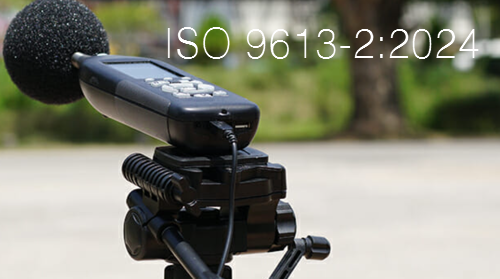Informazione tecnica HSE / 25 ° anno
/ Documenti disponibili:
45.648
/ Documenti scaricati: 34.679.104
/ Documenti scaricati: 34.679.104

ID 21313 | 06.02.2024 / Preview attached
ISO 9613-2:2024 - Attenuation of sound during propagation outdoors Part 2: Engineering method for the prediction of sound pressure levels outdoors
Published: 12.01.2024
his document specifies an engineering method for calculating the attenuation of sound during propagation outdoors in order to predict the levels of environmental noise at a distance from a variety of sources. The method predicts the equivalent continuous A-weighted sound pressure level (as described in ISO 1996-series) under meteorological conditions favourable to propagation from sources of known sound emission.
These conditions are for downwind propagation or, equivalently, propagation under a well-developed moderate ground‑based temperature inversion, such as commonly occurs in clear, calm nights. Inversion conditions over extended water surfaces are not covered and may result in higher sound pressure levels than predicted from this document (see e.g. References [11] and [12]).
The method also predicts a long-term average A‑weighted sound pressure level as specified in ISO 1996-1 and ISO 1996-2. The long-term average A‑weighted sound pressure level encompasses levels for a wide variety of meteorological conditions.
Guidance has been provided to derive a meteorological correction based on the angular wind distribution relevant for the reference or long-term time interval as specified in ISO 1996-1:2016, 3.2.1 and 3.2.2. Examples for reference time intervals are day, night, or the hour of the night with the largest value of the sound pressure level. Long-term time intervals over which the sound of a series of reference time intervals is averaged or assessed representing a significant fraction of a year (e.g. 3 months, 6 months or 1 year).
The method specified in this document consists specifically of octave band algorithms (with nominal mid-band frequencies from 63 Hz to 8 kHz) for calculating the attenuation of sound which originates from a point sound source, or an assembly of point sources.
The source (or sources) may be moving or stationary. Specific terms are provided in the algorithms for the following physical effects:
- geometrical divergence;
- atmospheric absorption;
- ground effect;
- reflection from surfaces;
- screening by obstacles.
Additional information concerning propagation through foliage, industrial sites and housing is given in Annex A. The directivity of chimney-stacks to support the sound predictions for industrial sites has been included with Annex B. An example how the far-distance meteorological correction C0 can be determined from the local wind-climatology is given in Annex C. Experiences of the last decades how to predict the sound pressure levels caused by wind turbines is summarized in Annex D.
The method is applicable in practice to a great variety of noise sources and environments. It is applicable, directly, or indirectly, to most situations concerning road or rail traffic, industrial noise sources, construction activities, and many other ground-based noise sources. It does not apply to sound from aircraft in flight, or to blast waves from mining, military, or similar operations.
To apply the method of this document, several parameters need to be known with respect to the geometry of the source and of the environment, the ground surface characteristics, and the source strength in terms of octave band sound power levels for directions relevant to the propagation.
If only A‑weighted sound power levels of the sources are known, the attenuation terms for 500 Hz may be used to estimate the resulting attenuation.
The accuracy of the method and the limitations to its use in practice are described in Clause 9.
...
Fonte: ISO

Comunicazione della Commissione nell'ambito dell’applicazione della direttiva 94/25/CE del Parlamento europeo e del Consiglio, del 16 giug...
Systems and software engineering -- Systems and software product Quality Requirements and Evaluation (SQuaRE) -- Common Industry Format (CIF) for usability: General framework for ...

ID 20098 | 03.08.2023
UNI 11919-1:2023
Modello applicativo nazionale della UNI EN ISO 26000:2020 - Parte 1:...
Testata editoriale iscritta al n. 22/2024 del registro periodici della cancelleria del Tribunale di Perugia in data 19.11.2024